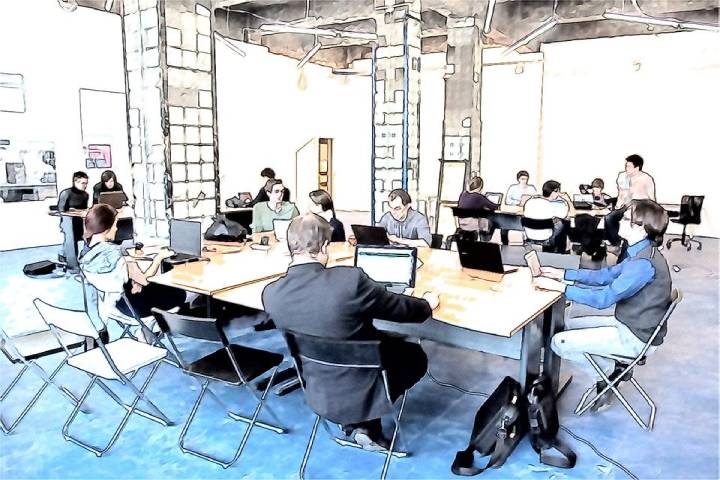Business
Things to Learn from New Generation Project Management Leaders
Things to Learn from New Generation Project Management Leaders. Continuous learning culture, Collaborative leadership, Quick adjustments

The world is changing fast and so do the technologies. According to updates, several organizations are facing disruptive changes as well as a drop-down transformation. In this scenario, a younger generation of project leaders is navigating new technologies to the digital era in business by their talent.
The younger generation of project managers is very passionate about their inclusion, collaboration, as well as creativity. They view the project work as one type of foundation that can lead to a positive impact across the field.
Now, it’s high time to invest in new technology which can be considered a ladder to success. In this article, we’ll look at things that should be learned from the new generation of project leaders.
The information shared in this article is via interviews that have been done with this year’s future 50 honorees as well as many other project leaders across the globe. So, let’s dig in without burning additional time.
Table of Contents
1. Continuous learning culture
As we know, the world around us is changing so fast along with new tools, software, technologies, and various opportunities that are continually emerging. It is high time to learn innovative ideas and only that can help in this rapidly changing environment.
New-generation project leaders think that in today’s scenario, one has to be flexible to react quickly to the fast-changing tech. Such adaption is very crucial for navigating ambitious customer requirements as well as agile competitors.
According to a survey, most organizations are looking for those candidates who consists of enough knowledge and skills regarding new project management technologies. Every business needs a group of team members who have a specific skill set that can be executed for several bold ideas to stand out from the competitors.
In this way, cultivating new talent is considered necessary in this era of the cat race. New-generation project leaders are well-equipped to deal with changes as they are continually learning, experimenting, and innovating new ideas which lead businesses to high approaches.
2. Collaborative leadership
In PMI, collaboration leadership is considered one of the most powerful skills. All progressive organization has adopted this concept as it helps them to work more effectively by engaging deeply with the team members. Various unique ideas, as well as abilities, are discussed in the room, and the specific decision concludes. It makes the process of dealing much faster.
It is essential to schedule a meeting to know the capabilities of individuals. Likewise, some are capable of handling tech errors, some handle risk management, and a few have quick, creative ideas. In this way, if the work is allotted to specific individuals according to their capabilities, then the result would be done more effectively and faster.
3. Quick adjustments
Today’s generation of project leaders can sense the situation of emergency when it comes to tackling problems (risk management), and they choose to face them rather than sitting back and losing the opportunity.
The youth are aware of the fact that it is essential to start executing the projects as soon as possible. New-generation project leaders believe in taking ownership of urgent issues. In this way, they are better at handling risk management and leading various projects to success.
4. Focus on purpose which leads to a positive impact
Any project needs to be run for a particular purpose, and the younger generation of project talent does this job in a better way. They have pre-planned and pre-discussed objectives regarding every turning point of the project. This is the only reason their work never gets slow or postponed.
There are different criteria for different projects, but the team should know the specific purpose of the project. In this way, they would be able to see the motive as well as the objective of the project, which would lead to proper project management.
5. Wide range of diverse individuals
Many workplaces think that the lesser the individuals, the lesser would be the crowd. Is that concept still the same? Not at all, having a wide range of diverse individuals can bring various new innovative and creative ideas by which the project could be led more effectively.
Diversity in the workplace means a wide range of points of view. Such different points of view can inspire more creativity as well as innovation in the decision-making room. Over there, the talent of all the employees would be accepted and appreciated by their organization.
6. Confidence | New Generation Project Management Leaders
A new generation project leader believes that there should be a confident leader for creating a confident team. The only confident leader can reflect encouraging power to their team members.
Let’s face it: The project is not on the right track, and it is the phase of risk management. All the team members would have tons of pressure on their heads. In this scenario, the project leader has to be well-confident which would make the team motivated.
7. Organization
Whether it is a giant or small project, it is essential to keep everything well organized. There should be proper organization in the system as well as time usage. New-generation project leaders believe in supporting every system in a well-organized way, such as keeping emails as well as digital pages or files organized. They consist of a to-do list system.
Today’s youth project leader takes time too seriously as it flies if you are not aware of how you’re using it. Not only do they schedule a meeting but even design their own time to make sure that things are done on time. Not every day works as per your plan. The various major part of staying organized is the ability to adjust the plan without collapsing into chaos.
9. Final verdict | New Generation Project Management Leaders
Thus, above was everything you need to learn from new-generation project leaders. Being a project leader, you have to lead various project aspects toward one direction which is a success. Along with new technologies, different project management strategies should also learn from today’s project leaders.
Business
Navigating the Process of Selling Deceased Estate Shares
This article aims to provide a comprehensive guide to selling shares from a deceased estate. Process of Selling Deceased Estate Shares.

Table of Contents
1. Understanding the Basics of Selling Deceased Estate Shares
Dealing with a deceased estate can be a challenging and emotional process, especially when it comes to handling financial assets like shares. This article aims to provide a comprehensive guide to selling shares from a deceased estate.
2. What are Deceased Estate Shares?
Deceased estate shares refer to the stocks and shares that were owned by an individual who has passed away. These shares become part of the deceased’s estate and are subject to the terms of their will or estate plan.
3. The Importance of Valuing the Shares
The first step in selling deceased estate shares is to obtain a current valuation. This valuation is crucial for several reasons: it helps in distributing the estate among beneficiaries, it may be necessary for tax purposes, and it gives an idea of the market value of the shares.
4. Legal Requirements and Executor Responsibilities
The executor of the estate plays a pivotal role in the management and distribution of the deceased’s assets. This section will cover the legal responsibilities and steps the executor needs to take to lawfully sell the shares.
5. Obtaining Probate
Before any action can be taken with the shares, it’s often necessary to obtain probate. Probate is a legal process that confirms the executor’s authority to deal with the deceased’s assets.
Transferring Shares into the Executor’s Name
Once probate is granted, shares may need to be transferred into the name of the executor. This process varies depending on the company and the type of shares.
6. The Process of Selling Shares
After completing legal formalities, the executor can proceed with selling the shares. This section will outline the steps involved in this process, including choosing a brokerage or financial service, understanding market conditions, and making informed decisions.
Deciding on the Right Time to Sell
Timing can significantly impact the returns from selling shares. Executors need to consider market conditions and financial advice to determine the best time to sell.
Completing the Sale
This subsection will detail the actual process of selling shares, including placing orders, handling transaction fees, and ensuring all regulatory requirements are met.

7. Navigating Tax Implications and Reporting
Managing tax obligations is a critical aspect of selling deceased estate shares. This section will explain the potential tax implications and the importance of accurate reporting for both capital gains tax and inheritance tax considerations.
Understanding Capital Gains Tax Responsibilities
When shares are sold, any profit made from the time of the deceased’s passing to the sale date may be subject to capital gains tax. Executors need to be aware of these implications and plan accordingly.
Inheritance Tax Considerations
In some jurisdictions, the value of the deceased estate’s shares might impact inheritance tax calculations. It’s essential for executors to understand these aspects in order to ensure compliance with tax laws.
8. Common Challenges and How to Overcome Them
Selling deceased estate shares can present unique challenges. This section will discuss common issues such as disputed wills, fragmented information about the shares, and market volatility.
Dealing with Disputed Wills and Beneficiary Disagreements
Disputes over the will or disagreements among beneficiaries can complicate the process. Executors must handle these situations delicately and legally.
Managing Market Volatility
Shares can be subject to market fluctuations. Executors should be prepared for this volatility and may need to consult financial advisors to navigate these waters effectively.
9. Tips for Executors Handling Deceased Estate Shares
This section will provide practical advice for executors, including the importance of seeking professional advice, keeping thorough records, and communicating clearly with beneficiaries.
Seeking Professional Financial and Legal Advice
The complexity of selling shares from a deceased estate often necessitates professional advice. This can range from legal counsel to financial advisory services.
Record Keeping and Communication with Beneficiaries
Maintaining transparent and thorough records is crucial. Executors should also prioritize clear and consistent communication with all beneficiaries to avoid misunderstandings.
Conclusion
Selling shares from a deceased estate is a responsibility that requires careful attention to legal, financial, and interpersonal dynamics. By understanding the process, staying informed about tax obligations, and tackling challenges head-on, executors can fulfill their duties effectively and respectfully.
-

 Instagram4 years ago
Instagram4 years agoBuy IG likes and buy organic Instagram followers: where to buy them and how?
-

 Instagram4 years ago
Instagram4 years ago100% Genuine Instagram Followers & Likes with Guaranteed Tool
-

 Business5 years ago
Business5 years ago7 Must Have Digital Marketing Tools For Your Small Businesses
-

 Instagram4 years ago
Instagram4 years agoInstagram Followers And Likes – Online Social Media Platform
















